Heterotrophic nutrition definition types and examples
Types of heterotrophic nutrition in animals
hi guys in this article we know about heterotrophic nutrition definition types and example and what is various types of heterotrophic nutrition in animals and plant and what is heterotrophic nutrition.
Table of Contents
Types of heterotrophic nutrition in animals
As we know sum total of process by which the living organisms obtain food and utilise it for use in various biological activities such as growth maintenance and for meeting their energy needs is termed as nutrition.
And there is two types of Nutrition autotrophic nutrition and heterotrophic nutrition. But in this article we explain and learn about heterotrophic mode of nutrition.
◆you should also visits our website https://biologysir.com and other website for civil engineer calculation at https://www.civilsir.com
■ follow on YouTube
◆name of fathers in field of Biology
● all full forms of 11th and 12th Biology
What is definition of heterotrophic Nutrition
As we know that animals,fungi, some protist like Amoeba and many bacteria have lack of chlorophyll and cannot utilise Sun energy. and they use chemical bond energy of organic molecules synthesized by the other organism in building their own organic molecules. taking of organic food by animals synthesized by autotrophs is term heterotrophic nutrition.
Heterotrophic combination of two latin word that is hetero means other and trophy means nourishment. Animals which take readymade organic food are called heterotrophs. they get organic molecules by taking plants are animals that is living or dead and their product and obtain energy by burning this molecules in their bodies.
Carbohydrates lipids proteins and nucleic acid are broken down and the fragments of their molecules are used to build new organic molecules.
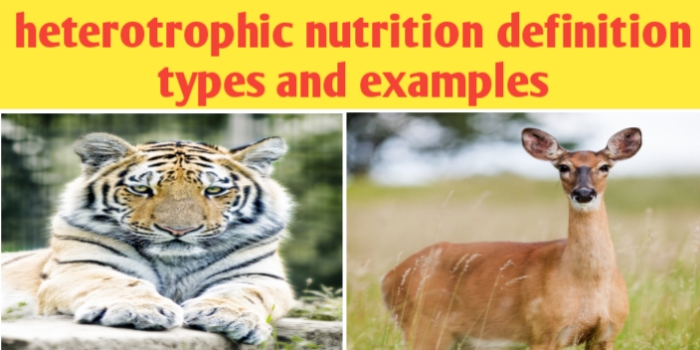
Heterotrophic nutrition definition types and examples
Different types of heterotrophic nutrition in animals
The major category of heterotrophic Nutrition is of four types
1) saprotrophic nutrition
2) holotropic nutrition
3) mixotrophic nutrition
4) parasitic nutrition
saprotrophic nutrition in animals
many organsisms absorb fluid food through the body surface this is called saprotrophic or obsorptive nutrition. Bacteria and fungi flourish on dead decaying organic matter of both plant and animal origin.
It secretes digestive enzyme onto this decaying material ,the enzyme hydrolyse the organic matter into simple soluble products that are then obsorbed by saprophyte. this mode of taking up organic food from non living source is known as saprophytic nutrition.
The few animals like spiders and housefly do not ingest solid food instead this animal secret digestive enzyme directly onto their food which is really are dead and decaying matters then they suck the food digested outside the body this type of Nutrition is called saprozoic nutrition.
holotropic nutrition
the mode of taking solid or fluid organic food via mouth is known as holotrophic nutrition.
Majority of invertebrates and all vertebrates take plants animal and their product through the mouth and break of the large organic molecules into smaller one in their own body with the help of digestive enzyme the simple molecules are then absorbed into the cell and utilise.
Types of holotropic nutrition
Depending upon the food habits of animals are mainly classified into three categories
1) herbivorous :- these it only algae and plant materials common example of Herbivorous animals are cows rabbit horse deer and etc
2) carnivorous :- these are flesh eating animals common example is lion tiger and etc
3) omnivorous :- these eat both plants and other animals as food common example is a sparrow ,man ,rat, cockroach ,crow ,bear and etc. Some animals take one type of food when young and different type of food when adult for example frog is herbivorous in their larva stage and carnivorous in the adult stage.
Many animals have variation in their feeding habits and are differently classified.
A) insectivorous :- these are insect eating animals and many carnivorous animal take insect as specific food common example is lizards ,toads, small bats and spiny and eaters.
B) Piscivorous :- this type of animals take fish as their food common example is Penguins and Kingfisher
C) Myremecophagous :- it is commonly called as ant eaters these animals take ant as food . common example is spiny ant eaters and scaly ant eater
D) Larvaevorous :- these types of animals only it’s larvae of mosquitoes the common example is Gambusia fish
E) Cannibals :- some carnivorous animal it’s up individuals of their own species and their feeding habit is known as Cannibalism for example Bed bug.
F) Carrion feeders :- these animal feed on carcases of Dead animal. Their common example is vulture
G) sanguivorous :- they suck blood of other animals for example mosquitoes bedbugs Vampire lamprey are their common example
H) Frugivorous :- these are fruit eating animals their common example is birds and monkeys
I) Grainivorous :- these animals feed on grains for example pigeon and dove
J) Folivorous :- these are leaves eating animals for example sheep and goat
K) Detritivorous :- some heterotrophs feed on debris and utilise dead decaying organic matter from it. These are called as detritivore common example is earthworm
L) Coprophagous :- these heterotrophs feed on animal dung and their feeding habit is known as coprophagy their common example is dog and pigs.
Mixotrophic nutrition
this mode of heterotrophic nutrition is found in common protist euglena .we know that euglena have both plant and animal character that’s why it is sandwich between plants and animals. Euglena carries on autotrophic and heterotrophic nutrition at the same time this is known as Mixotrophic nutrition.
When there is sufficient amount of Sunlight is present then euglena undergoes photosynthesis process and making their own food in the presence of chlorophyll A and chlorophyll B and store its food in the form of paramylon that is Reserve food material in euglena
parasitic nutrition
as we know that parasites live on liquid food material obtained from the body of host and their mode of nutrition is known as parasitic nutrition. Some parasitic like plasmodium trypanosoma and invertebrate like taenia solium and Ascaris live in a medium that content simple organic compound ready for absorption and the straight way absorb them.

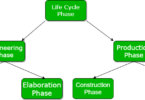

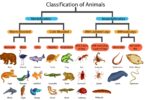
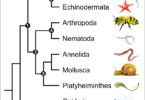
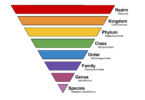
Leave a Comment